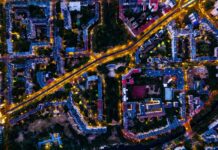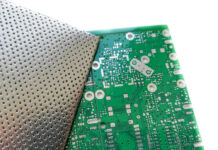
As cities around the world continue to expand, the challenges of urban planning and management become increasingly complex. Growing populations, aging infrastructure, and the pressing need for sustainability require innovative approaches that can adapt to rapid changes.
At the heart of these smart city solutions lies real-time data—streams of information that provide city planners and administrators with a clear, dynamic view of urban environments. Among the critical technologies enabling this shift is GNSS equipment, which offers highly accurate geospatial data crucial for everything from traffic management to emergency response.
Global Navigation Satellite System (GNSS) equipment plays a pivotal role in the collection and analysis of real-time data. By delivering precise positioning information, GNSS systems help map and monitor urban landscapes with unmatched accuracy. When combined with other data sources, such as sensors, cameras, and IoT devices, GNSS technology becomes a powerful tool for building cities that are not only smarter but also safer and more efficient.
The Role of Real-Time Data in Urban Planning
One of the most significant advantages of real-time data in city planning is its ability to provide a living, breathing map of urban environments. Unlike traditional static maps, real-time data reflects ongoing changes in traffic patterns, population movements, and environmental conditions. This dynamic perspective allows city planners to make informed decisions quickly, whether they are optimizing public transport routes, adjusting traffic light sequences, or planning new developments.
For example, in managing traffic congestion, real-time data can reveal which intersections are consistently backed up and which alternative routes are underused. By integrating GNSS data with traffic sensors and public transport information, city officials can implement adaptive traffic control systems that respond to actual conditions on the ground. These systems can adjust traffic light timings, reroute public buses, and provide drivers with up-to-date navigation suggestions to avoid bottlenecks.
Real-time data also supports predictive urban planning. By analyzing historical and live data, city planners can identify trends and anticipate future needs. This foresight is invaluable when planning infrastructure projects that must accommodate not only current demands but also future growth. Whether it is determining where to build new schools or how to expand public transport networks, data-driven insights lead to smarter, more resilient cities.
Enhancing Public Safety with Geospatial Insights
Public safety is a critical component of smart city initiatives, and real-time data plays a central role in keeping residents safe. From natural disasters to everyday emergencies, the ability to respond quickly and effectively depends on accurate, real-time information. GNSS equipment, combined with other sensor technologies, provides emergency services with precise location data that enhances their response strategies.
During natural disasters such as floods, earthquakes, or wildfires, real-time geospatial data can help emergency teams monitor the situation and deploy resources effectively. Drones equipped with GNSS systems can survey affected areas, identifying safe routes and assessing damage without putting human responders at risk. These insights enable emergency services to prioritize rescue operations, deliver aid efficiently, and minimize risks to both victims and rescue personnel.
Real-time data is also valuable in day-to-day public safety operations. Law enforcement agencies use geospatial data to track patrol units, analyze crime patterns, and allocate resources more effectively. For example, by analyzing real-time data from surveillance cameras and GNSS-equipped vehicles, police departments can respond faster to incidents and improve overall public safety.
Additionally, real-time data supports the management of public events. Large gatherings, such as concerts or sports events, pose logistical and safety challenges. With GNSS technology, event organizers can monitor crowd movements, manage access points, and ensure emergency services are prepared for potential incidents. This proactive approach not only enhances safety but also improves the overall experience for event attendees.
Building Sustainable and Resilient Urban Spaces
The push towards sustainability is a defining characteristic of modern smart cities. As climate change impacts become more pronounced, cities are under pressure to reduce their carbon footprints, improve resource efficiency, and enhance climate resilience. Real-time data, particularly when enriched with geospatial insights from GNSS equipment, is instrumental in achieving these goals.
One key area where real-time data contributes to sustainability is energy management. Smart grids, which rely on sensors and GNSS technology, monitor energy consumption patterns and adjust supply accordingly. During peak usage times, these systems can optimize energy distribution, reduce waste, and integrate renewable energy sources more effectively. In public spaces, smart lighting systems use geospatial data to adjust street lighting based on pedestrian or vehicle presence, conserving energy without compromising safety.
Water management is another critical aspect of urban sustainability. Cities often struggle with water distribution, flood management, and wastewater treatment. By integrating real-time data from water sensors with geospatial data, city officials can monitor water levels, predict flooding risks, and manage water distribution networks efficiently. This approach not only conserves water but also protects communities from water-related disasters.
Real-time data also enhances urban resilience by supporting environmental monitoring. Sensors placed around the city can measure air and water quality, track temperature fluctuations, and monitor soil conditions. When combined with GNSS data, this information helps identify pollution sources, track environmental changes, and guide policies that improve public health and environmental quality.
The Future of Smart Cities: Data-Driven Innovation
As technology continues to evolve, the potential applications of real-time data in smart cities will only grow. Emerging technologies such as artificial intelligence (AI) and machine learning (ML) offer new ways to analyze and interpret data, providing city planners with deeper insights and predictive capabilities. These technologies can identify patterns in vast datasets, offering solutions to complex urban challenges that would be difficult to spot through manual analysis.
For example, AI-driven analytics can help predict traffic congestion based on historical data, weather conditions, and real-time GNSS data from vehicles. Similarly, machine learning algorithms can analyze sensor data to detect anomalies in infrastructure, such as developing cracks in bridges or unusual water flow in sewage systems. By catching these issues early, city officials can carry out maintenance proactively, reducing costs and preventing accidents.
The integration of augmented reality (AR) and virtual reality (VR) with geospatial data also offers exciting possibilities. City planners could use AR glasses to visualize proposed developments in real-time, seeing how new buildings or infrastructure projects would impact the existing landscape. VR simulations could model how changes in one part of the city might affect traffic, environmental quality, or public services elsewhere.
Moreover, as the Internet of Things (IoT) expands, the amount of real-time data available to city planners will increase exponentially. IoT devices, from smart thermostats to connected vehicles, generate a continuous stream of data that, when combined with GNSS insights, provides a holistic view of urban environments. This data-driven approach empowers cities to become not only smarter but also more adaptable, ensuring they can respond to challenges quickly and effectively.
Conclusion: Embracing Real-Time Data for Smarter Cities
Designing smarter cities is not just about integrating technology into urban environments—it is about using data to create spaces that are livable, sustainable, and resilient. Real-time data, supported by precise GNSS equipment, offers city planners the insights needed to make informed decisions that benefit both current and future generations.
By leveraging the power of real-time data, cities can improve traffic management, enhance public safety, and promote sustainability. As the technology behind smart cities continues to evolve, the integration of geospatial data will remain a crucial element in building urban spaces that are efficient, safe, and forward-thinking. As more cities embrace this approach, the dream of truly smart cities—where technology and community needs align seamlessly—moves closer to reality.
Find a Home-Based Business to Start-Up >>> Hundreds of Business Listings.















































